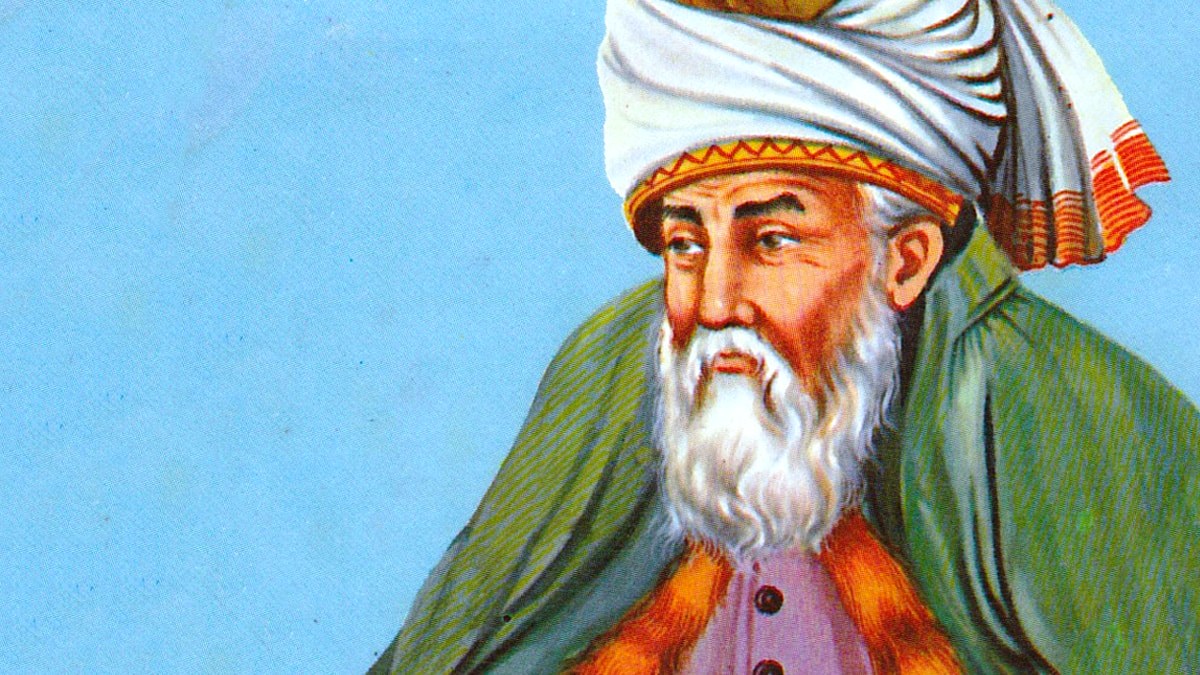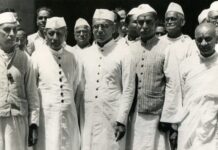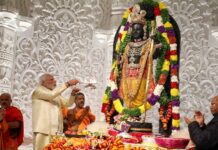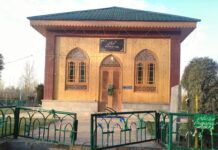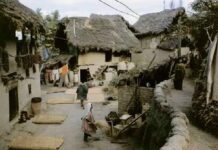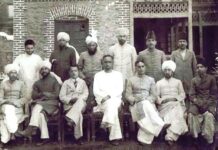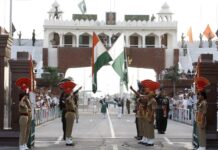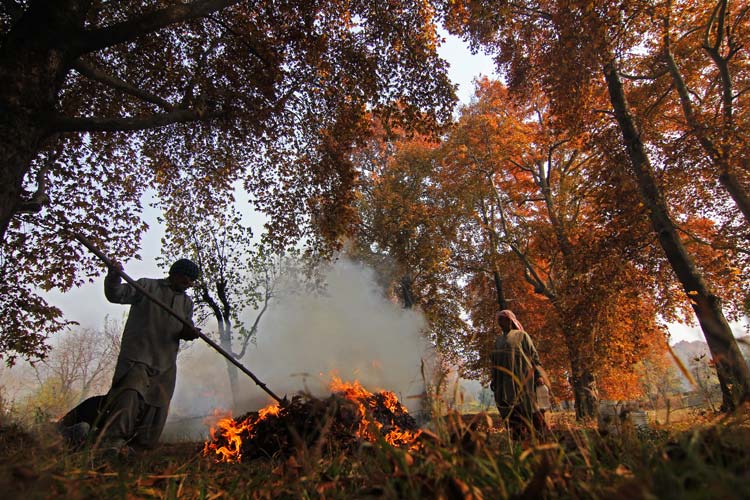Even as tens of books were published this season, Kashmir read only two books in huge numbers – one by British authors exposing the al-Faran crisis and another by a separatist hawk, R S Gull reports
As They Said…
“Abdullahs have taken full benefit of SRO-43, when Sheikh Abdullah expired, Dr Farooq Abdullah became the CM and after Farooq, Omar became the CM and who knows another one from Omar family will take the reins of NC in future.”
Mehbooba Mufti said in a public rally at Surankote Poonch.
From hunters to visitors, Kashmir has been profusely written about for centuries. Though most of them are rare but reprinting Kashmir still is a huge sector. “Last year we printed 71 titles and more than 20 were reprints of some earlier books,” Sheikh Aijaz, the promoter of Gulshan Publications said. “This year, we had 30 English publications and I believe 12 are reprints.”
Reprints apart, books are being written in Kashmir too. Though not many academics want to be authors, there are people willing to play the game. A few former officials turned columnists published multiple volumes this year, which are guest-forwarded collection of articles they had written for newspapers. But credit goes to them for keeping a tradition alive. While doing so, they have risen to the upper echelons of the society, so high that many think some of them are suffering from altitude sickness!
Academic Dr Bashir A Dabla, one of the few researchers who are still in working  order, published two books this fall – the Social Transformation In Kashmir and the Increasing Suicides in Kashmir: A Sociological Study. Nyla Ali Khan edited The Parchment of Kashmir: History, Society, and Polity, a cross-disciplinary anthology on contemporary Kashmir. Political science Reader in Delhi University, Veena Basudeva did Kashmir Imbroglio, apparently an analysis based on the established state narrative.
order, published two books this fall – the Social Transformation In Kashmir and the Increasing Suicides in Kashmir: A Sociological Study. Nyla Ali Khan edited The Parchment of Kashmir: History, Society, and Polity, a cross-disciplinary anthology on contemporary Kashmir. Political science Reader in Delhi University, Veena Basudeva did Kashmir Imbroglio, apparently an analysis based on the established state narrative.
There were books on issues other than politics and sociology. Senior IAS Officer, Parvez Dewan, whose three books on three regions of J&K is the main source for tourist guide books writers had done The Natural Heritage of Jammu, Kashmir, Ladakh this year. B L Bhellum published Flora Exotica Of Jammu & Kashmir. There were scores of self-published books by authors including poets and short story writers. Even Manoj Sheeri who is official spokesman for Kashmir rang of state police did a short story book, Khusbo-e-Kashmir.
Two major pictorial books were added to the collections this year. Photographer Amit Mehra’s Kashmir captures different scenes in color. Anita Sharma’s The Bakkarwals Of Jammu And Kashmir is an extensive documentation of the life of these nomads.
But these are books that people borrow from the libraries for which they are actually being manufactured. Kashmir did not read all this. Individual readers are driven by different things, especially in Kashmir. “The best book that did best of the business was The Meadow,” a sales person at the Password said. “It was (Syed Ali) Geelani’s book that was No 2.” This is something that Aijaz shares.
The Meadow: Kashmir 1995 – Where the Terror Began is still in demand in the Kashmir market because it relives one of the most painful patches of Kashmir’s contemporary history. Its authors, investigative journalists Adrian Levy and Cathy Scott-Clark, used every scratch of paper and met almost every small and big actor involved directly or indirectly in the crisis management to recreate a gripping story that was told for the first time to Kashmir and the world after the 1995 hostage-taking of western tourists from Kashmir by shadowy Al-Faran. Interestingly, nobody has refuted the account that the book describes.
Geelani’s Wullar Kinaray is actually the second part of his “autobiography”. Written in chaste Urdu and apparently without any attempt at editing, the book was supposed to be a huge hit for his supporters, antagonists and policy makers from Srinagar to Delhi. The book offers insights into Jamat-e-Islami’s participation in electoral politics and a peephole view of certain incidents after militancy broke out. The book addresses the larger constituency with a lot of flab and overdose of history. Once Geelani completes the series, it is possible that some professional might carve out a superb biography out of it.
Even Khaliq Parvez’s second volume of his Jilawattan was received very well. It is a story about a boy being banished by rulers of Kashmir and destiny getting him back home.
There were many books published elsewhere in the world on Kashmir but are yet to be available to the Asian market. The Untold Story Of The People Of Azad Kashmir by Australian politico-strategic analyst Christopher Snedden is on the history of ‘other’ Kashmir. A South Asian expert, his PhD was on Paramountcy, Patrimonialism and the Peoples of Jammu and Kashmir, 1947-1991.
Snedden’s book is part of the alternative narrative challenging state theories about the crisis that led to the creation of a dispute. This book is additionally important because of its scholarly analysis of the pogrom that Hari Singh’s forces led in Jammu in 1947.
Another book that drew a lot of media interest was Matthew J Webb’s Kashmir’s Right to Secede: A Critical Examination of Contemporary Theories of Secession which explores Kashmir’s right to secession within a critical evaluation of three streams of secessionist theory. “In testing the strength of these theories, Webb aims as much to ascertain the satisfactoriness of these theories as to evaluate the moral justifiability of Kashmir’s secession,” a review published in a Kathmandu magazine reads.
Even Neera Chandhoke’s Contested Secessions Rights, Self-Determination, Democracy, and Kashmir addresses the same issue examining whether the Kashmiri people have the right to secede; if so, why, and if not, why?




